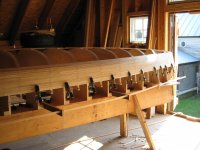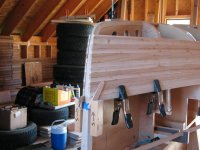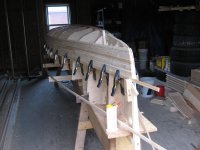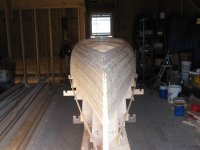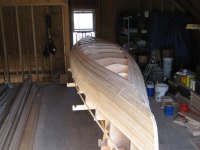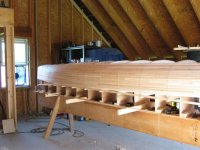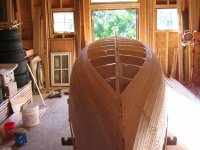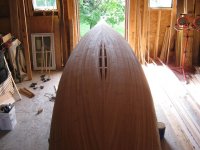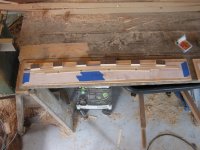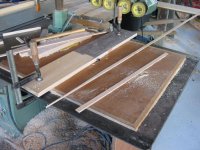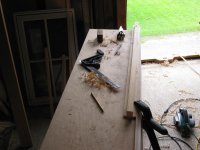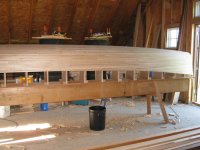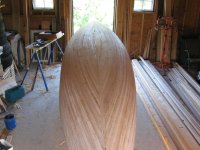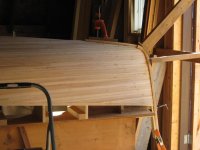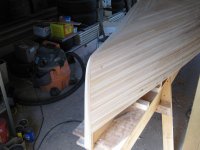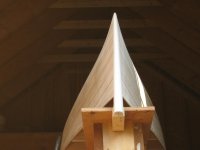I'm just about done with the easy strips. I've enjoyed the prep work, but stripping is just flat out fun! It's been hot here so I've been using Titebond III for the extended open time. So far I've just used the 5/8 inch wide full length strips, except for one course of 3/4 inch 6 and 8 footers, which enabled me to reach the low point of the shear neatly. I was surprised how much easier the short strips are to handle and install, and how simple it is to end join strips on the boat. Because I started at the water line and am stripping backwards I clubbed together a simple rack to hold strips while I applied glue. Then I'd seat the strip with "Jimmy Clamps" between each station, and then tack it off. The Jimmy Clamps work incredibly well!
I have renewed respect for those of you who build staple less!
I told Karen that most of my life I've built plumb, level and square, often with crooked material. This boat building thing is the opposite. It's a really interesting new headset for me!
I have renewed respect for those of you who build staple less!
I told Karen that most of my life I've built plumb, level and square, often with crooked material. This boat building thing is the opposite. It's a really interesting new headset for me!

